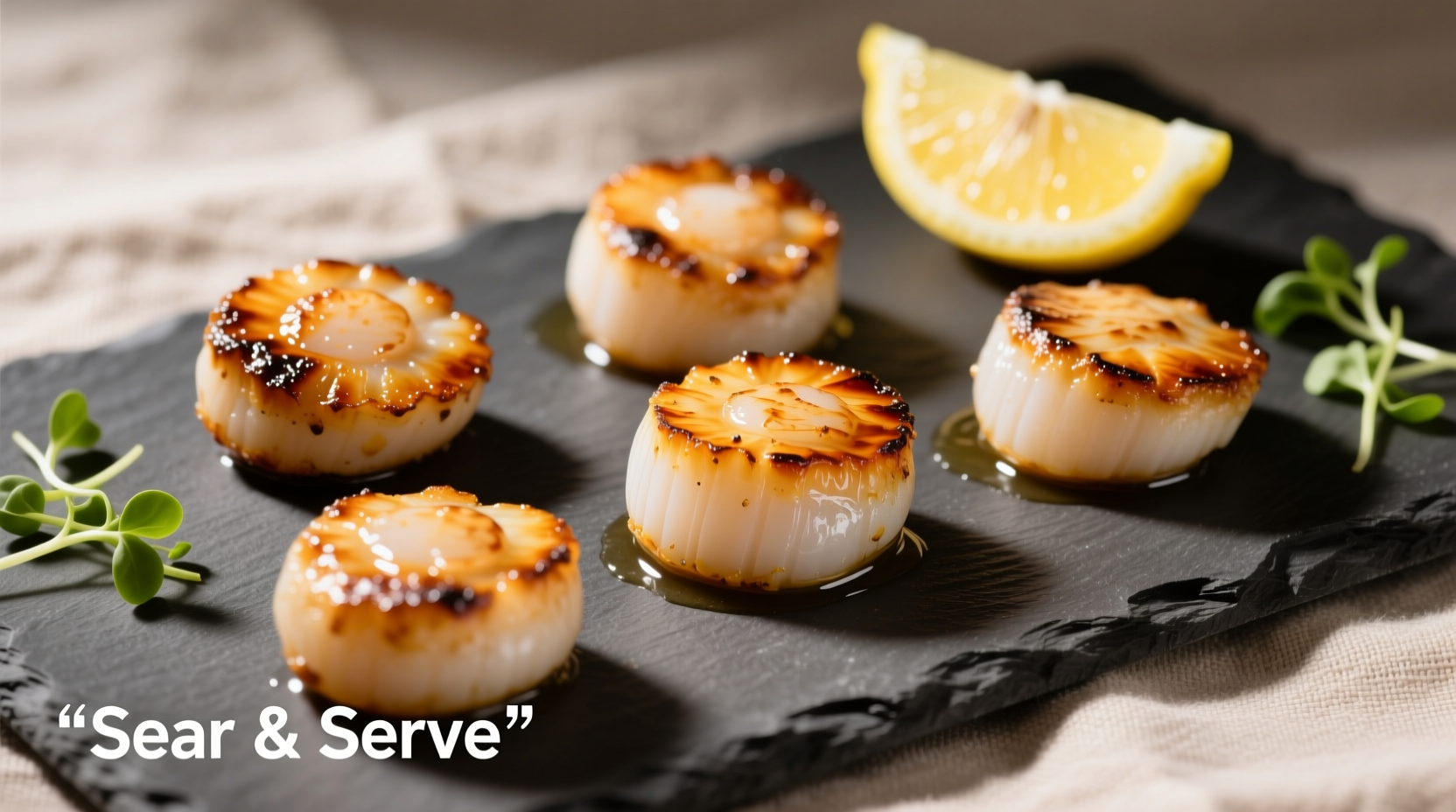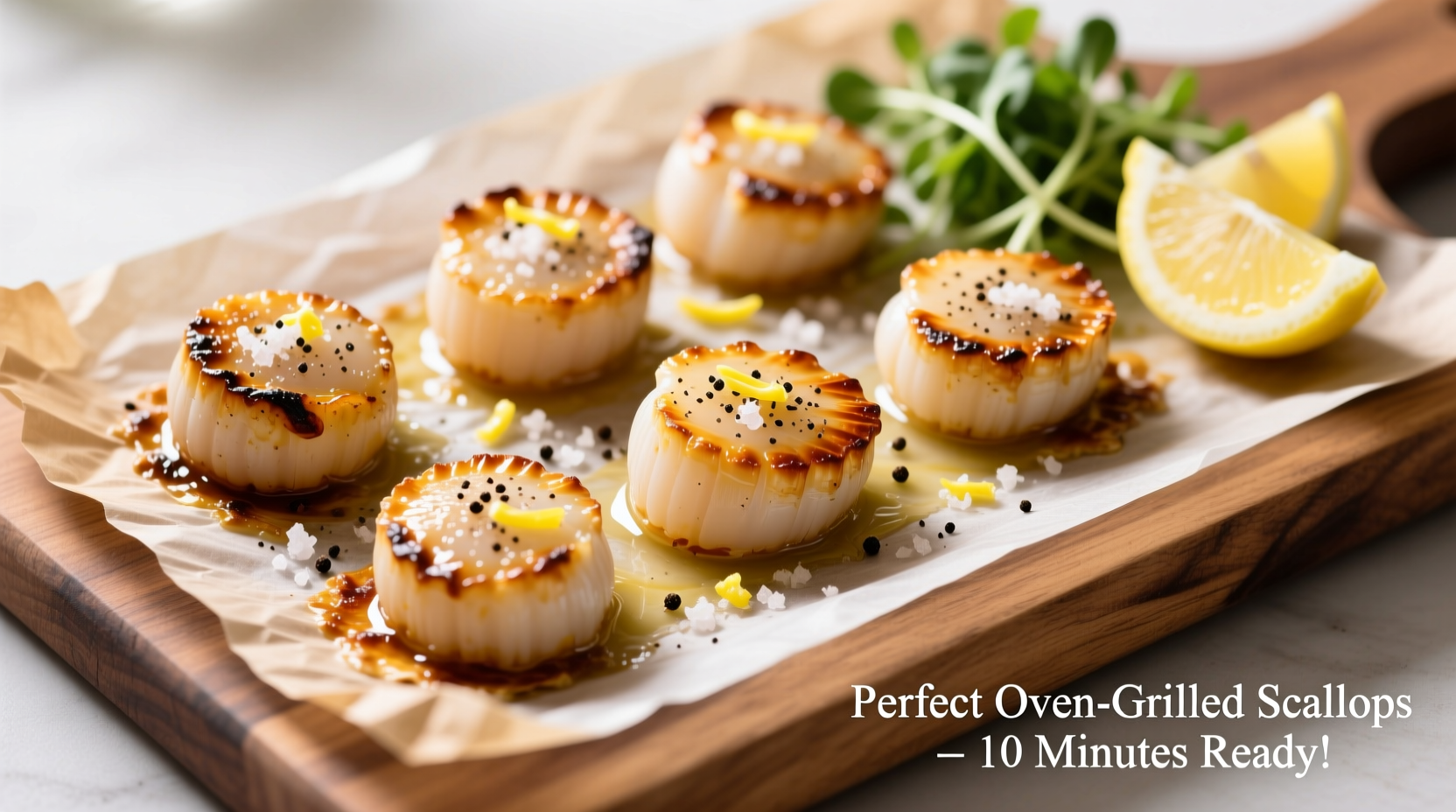Why Oven Cooking Transforms Scallops Into Gourmet Delights
Scallops rank among the most delicate seafood treasures, yet achieving that perfect balance of caramelized exterior and tender interior often frustrates home cooks. While stovetop searing remains popular, oven cooking offers remarkable consistency—especially for beginners. This method eliminates the anxiety of flipping delicate scallops while ensuring even cooking through precise temperature control. Unlike pan-searing that requires constant attention, oven preparation allows you to focus on complementary dishes while your scallops transform into culinary masterpieces. The gentle, enveloping heat prevents the common pitfalls of rubbery texture or uneven doneness that plague many seafood attempts.Understanding Scallops: Your Foundation for Success
Before touching heat, understanding your raw material proves crucial. Not all scallops behave identically in the oven, and selecting the right type makes the difference between disappointment and delight.| Scallop Type | Water Content | Searing Ability | Best Cooking Method |
|---|---|---|---|
| Dry-packed | Natural moisture (75-80%) | Excellent caramelization | Any method, especially oven |
| Wet-packed | 30%+ added phosphate solution | Poor—releases excess water | Requires extra drying time |
Preparation Essentials: The 15-Minute Setup That Makes All The Difference
Professional chefs universally emphasize that 90% of successful seafood cooking happens before heat application. Follow these critical preparation steps:- Dry thoroughly: Place scallops on paper towels, cover with additional towels, and refrigerate uncovered for 15 minutes. This removes surface moisture that prevents proper caramelization
- Temperature equilibrium: Remove scallops from refrigerator 20 minutes before cooking. Cold scallops shock when hitting hot surfaces, leading to uneven cooking
- Seasoning strategy: Lightly coat with flaky sea salt and freshly cracked black pepper only after drying. Avoid early salting which draws out moisture
- Pan selection: Use oven-safe stainless steel or cast iron skillet preheated in the oven for 5 minutes before adding scallops

The Oven Cooking Process: Precision Timing for Perfect Results
Follow this exact sequence for restaurant-quality results:- Preheat oven to 400°F (204°C) with rack positioned in upper third
- Heat oven-safe skillet in preheating oven for 5 minutes
- Carefully add 1 tablespoon high-smoke point oil (avocado or grapeseed)
- Arrange scallops 1 inch apart in single layer—never overcrowded
- Cook undisturbed for 12-15 minutes until edges turn opaque and internal temperature reaches 115-120°F (46-49°C)
- Optional: Broil 1-2 minutes for deeper caramelization
Context Boundaries: When Oven Cooking Shines (And When It Doesn't)
While oven cooking delivers remarkable consistency, understanding its limitations ensures optimal results:- Ideal for: Large batches (6+ scallops), thicker sea scallops, beginners, meal prep scenarios
- Limited effectiveness: Very small bay scallops (better suited to quick sauté), when immediate crust formation is desired
- Requires adjustment: Humid environments (extend drying time), older ovens with temperature inconsistencies (use oven thermometer)
Troubleshooting Common Scallops Problems
Even with perfect technique, challenges arise. Here's how to rescue common issues:- Watery pan: Caused by insufficient drying or wet-packed scallops. Solution: Extend drying time, increase oven temperature by 25°F
- Pale appearance: Indicates temperature too low or overcrowded pan. Solution: Preheat pan longer, increase spacing between scallops
- Rubbery texture: Result of overcooking or cold scallops. Solution: Use instant-read thermometer, allow proper temperature acclimation
- Sticking to pan: Pan not hot enough or premature movement. Solution: Ensure proper preheating, wait until edges release naturally
Finishing Touches: Transforming Good Into Extraordinary
The final 60 seconds determines whether your scallops merely satisfy or truly impress:- Rest scallops 3 minutes before serving—this allows residual heat to complete cooking without overdoing
- Add finishing touches: Lemon wedges, microgreens, or herb-infused butter
- Pair with complementary sides: Asparagus, roasted potatoes, or citrus salad
- Wine pairing: Crisp Sauvignon Blanc or unoaked Chardonnay enhances the delicate sweetness
Frequently Asked Questions
How long should scallops cook in the oven at 400 degrees?
Scallops require 12-15 minutes at 400°F (204°C) for perfect medium-rare results. Thicker scallops may need up to 18 minutes. Always verify with an instant-read thermometer—remove at 115-120°F (46-49°C) internal temperature for ideal tenderness after resting.
Should I flip scallops when cooking in the oven?
No flipping necessary with proper oven technique. The radiant heat cooks scallops evenly without requiring turning. Flipping increases handling risks and disrupts the developing crust. Position scallops flat-side down initially and let the oven work its magic.
Why do my oven-cooked scallops turn out rubbery?
Rubbery texture almost always indicates overcooking or inadequate drying. Scallops contain delicate proteins that contract excessively when heated beyond 130°F (54°C). Always remove at 115-120°F (46-49°C) internal temperature and ensure thorough drying before cooking to prevent steaming.
Can I cook frozen scallops directly in the oven?
While possible, cooking frozen scallops yields inferior results. The excess moisture prevents proper searing and creates steaming conditions. For best results, thaw scallops overnight in the refrigerator, then follow the 15-minute drying protocol before cooking. If necessary, extend oven time by 3-5 minutes when using frozen scallops.
What's the best oil for oven-cooked scallops?
Choose oils with high smoke points (400°F+): avocado oil (520°F), grapeseed oil (420°F), or refined coconut oil (450°F). Avoid olive oil which smokes at lower temperatures, creating bitter flavors. Use just enough to coat the pan bottom—approximately 1 tablespoon for standard skillet.











 浙公网安备
33010002000092号
浙公网安备
33010002000092号 浙B2-20120091-4
浙B2-20120091-4